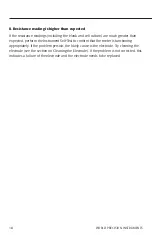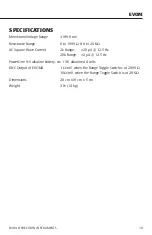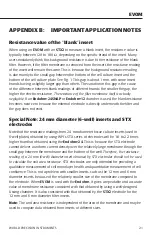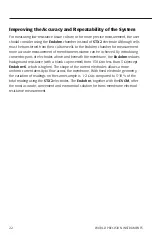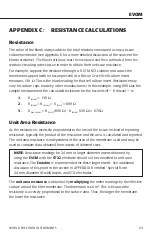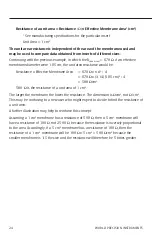
EVOM
4. Measuring Resistance
Set the Mode Switch to R.
Turn the meter power on.
Add electrolyte to a blank cup,
i.e.,
the cell culture insert without cells.
Insert the electrode into the blank cup.
Push the Measure R button. A steady ohms reading of the solution resistance should
result. The value of the blank always adds to the total resistance measured across a
tissue culture membrane. See Appendix A for a more detailed discussion of the source of
the blank resistance.
Blank Resistance:
The blank resistance must be measured and then subtracted from the resistance reading
across tissue in order to obtain the true tissue resistance.
See Appendix C for resistance
calculations and examples.
Unit Area Resistance:
As the resistance is inversely proportional to the area of the tissue, instead of reporting
resistance, typically the product of the resistance and the area is calculated and reported.
This value is independent of the area of the membrane used.
NOTE:
Resistance readings for 24 mm or larger diameter inserts obtained
using the
EVOM
with the
STX2
electrode should not be converted to unit area
resistance. See additional discussion of this point in APPENDIX B “Special Note: 24
mm diameter (6-well) inserts and the STX electrodes”.
The
unit area resistance
is obtained by
multiplying
the meter readings by the effective
surface area of the filter membrane. The dimension is
Ω
cm
2
. This is because the
resistance is
inversely
proportional to the surface area. Thus, the larger the membrane,
the lower the resistance.
Resistance of a unit area = Resistance (
Ω
) x Effective Membrane Area* (cm
2
)
* See manufacturing specifications for the particular insert
Unit Area = 1 cm
2
The unit area resistance is independent of the area of the membrane used and
may be used to compare data obtained from inserts of different sizes.
WORLD PRECISION INSTRUMENTS 9






















